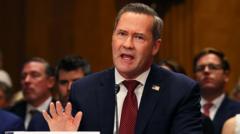The Biden administration has announced new regulations requiring cleanup of any detectable lead dust in homes and child-care facilities, aiming to better safeguard children from lead exposure.
E.P.A. Strengthens Lead Dust Regulations to Protect Children

E.P.A. Strengthens Lead Dust Regulations to Protect Children
New guidelines classify all detectable lead dust as a hazard, mandating property owners to undertake costly cleanups.
The latest move from the Biden administration involves a significant overhaul of the regulations concerning lead-based paint dust. Announced on Thursday, the Environmental Protection Agency (EPA) has implemented stricter rules that classify any detectable level of lead dust in residences and childcare facilities as a “lead hazard.” This is a critical step designed to offer improved protection to over 300,000 children annually from the harmful effects of lead exposure.
Under these new regulations, property and business owners will be held responsible for the costs associated with the cleanup of lead dust from their buildings. The concern over financial implications has already sparked discussions among affected property owners. With lead being a recognized neurotoxin, particularly harmful to developing brains and nervous systems, the urgency of these new measures cannot be understated. Lead was commonly used in paint formulations for its properties, such as durability and moisture resistance, until its ban in residential applications in 1978. Despite the ban, the EPA estimates that approximately 31 million older homes still contain lead-based paint, with about 3.8 million of these homes housing children under the age of six.
EPA official Michal I. Freedhoff emphasized, “The science is clear: There is no safe level of lead.” The agency highlights the profound impact lead exposure can have on children's health, potentially derailing promising futures and leading to lifelong challenges. As the nation confronts the legacy of lead exposure, these recent regulatory changes mark an essential stride toward safeguarding vulnerable populations, particularly children, from the lasting consequences of lead toxicity.























